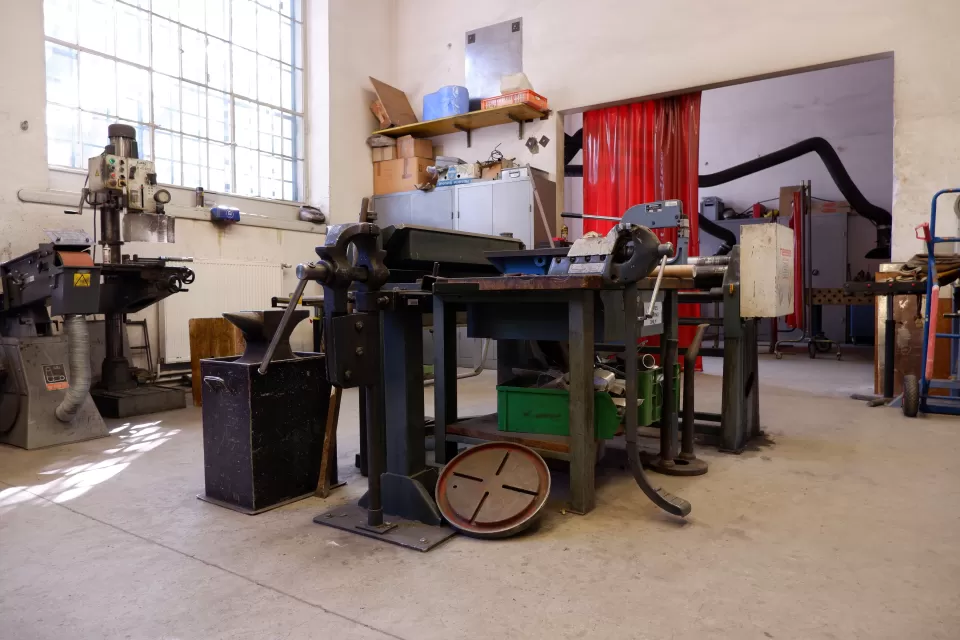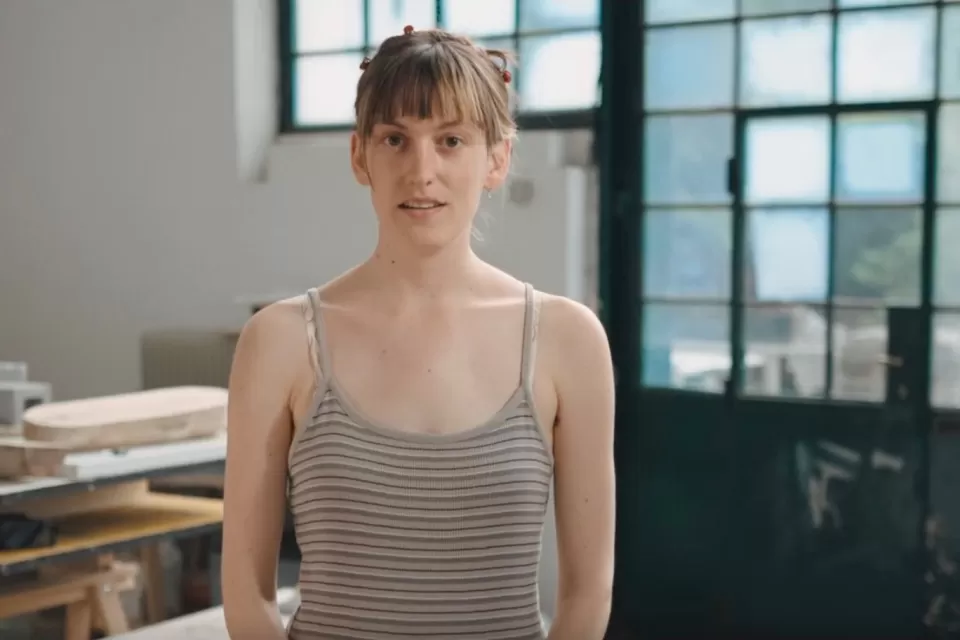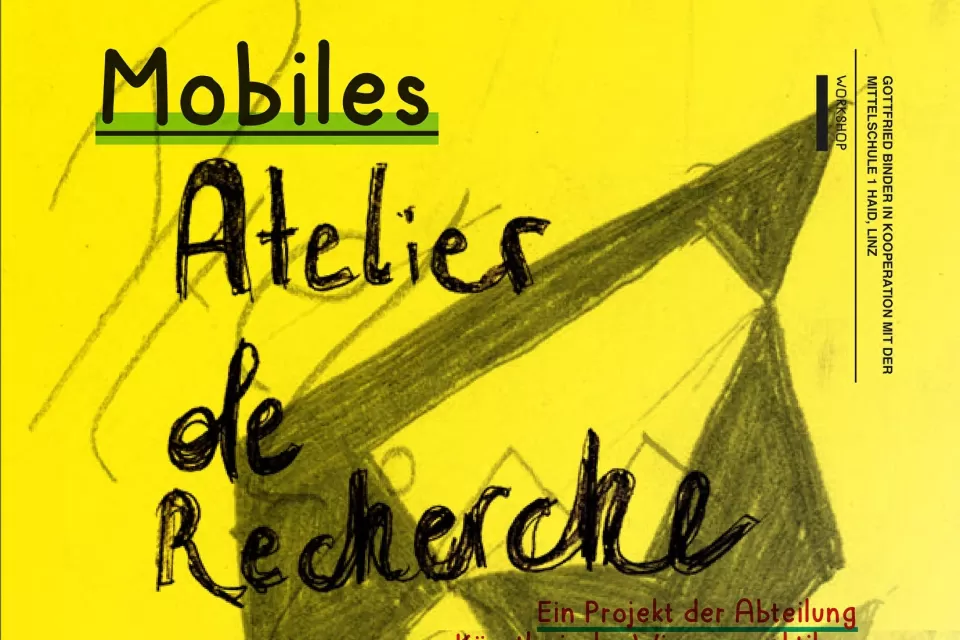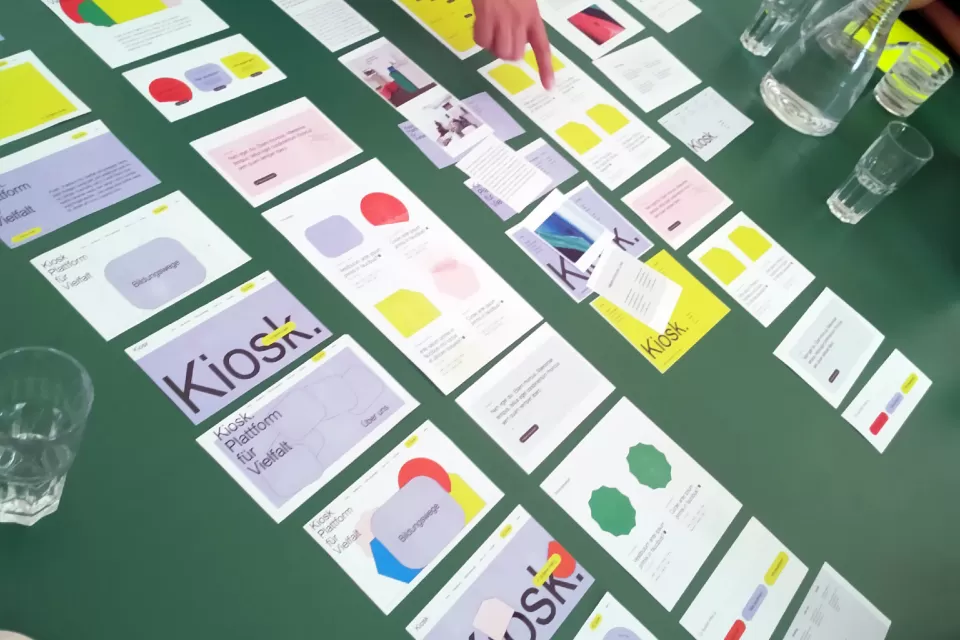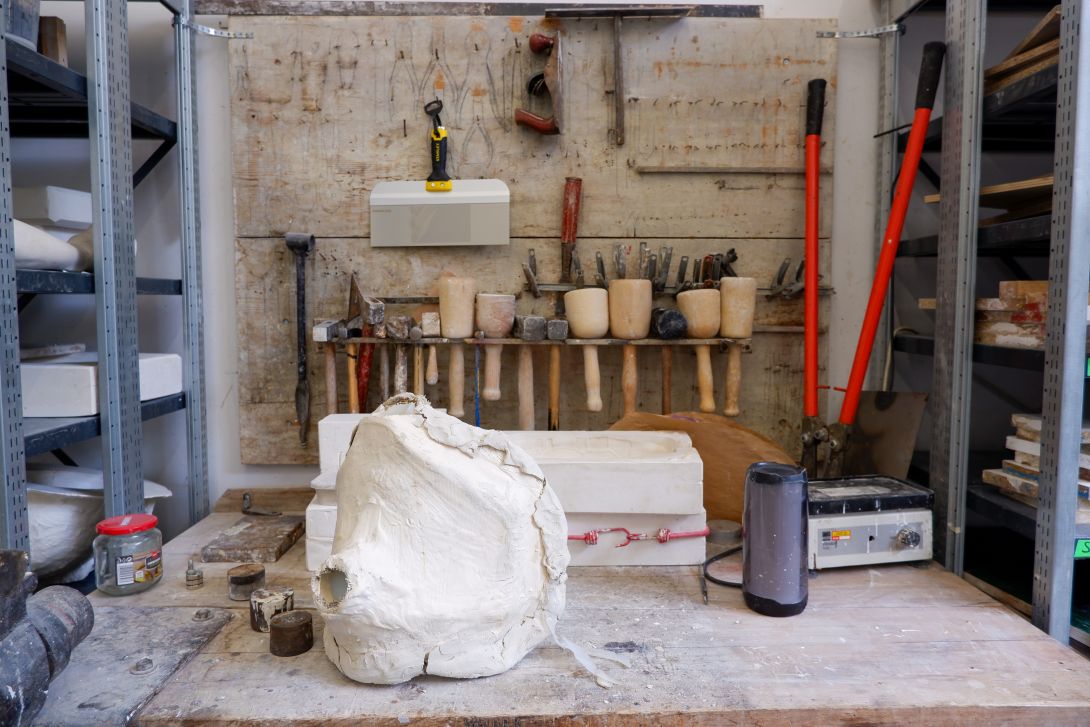
© Natalia Gurova
Sound Of Craft - Learning Through Experimentation
Author: Natalia Gurova (UGC)
Natalia Gurova meets Kristin Weissenberger - the head of the molding and casting techniques workshop. What can be built in these workshops? What kind of work could be developed? What materials can the students explore?
All these questions will be discussed with the workshop leader and artist in this episode of Sound and Craft, a podcast series by Natalia Gurova.
Natalia Gurova's work is dedicated to social structures that often remain invisible. Gurova's practice is multidisciplinary, which means that she works with sculpture, printmaking, drawing, and creates site-specific installations and spatial experiments. She curates exhibitions together with artists. Her artistic practice interweaves speculative stories, conceptual ideas and a craft-based approach.
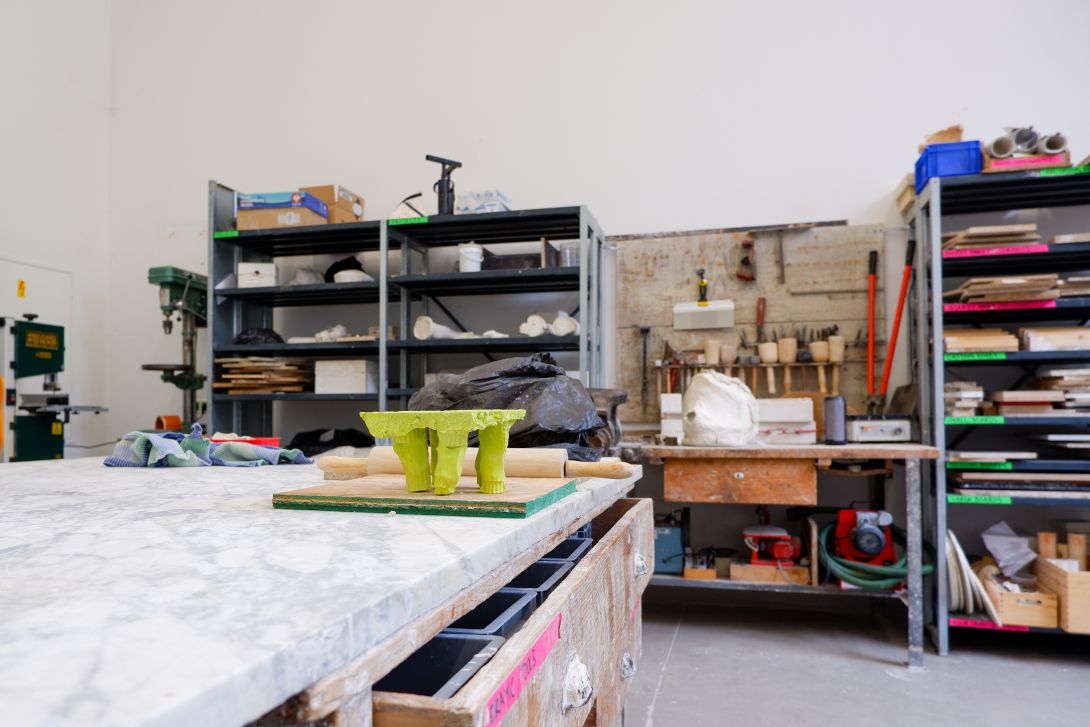
© Natalia Gurova
"Hello, my name is Kristin Weissenberger. I am an artist and lecturer at the Academy of Fine Arts Vienna, where I also run the workshop for molding and casting techniques, which recently has also become a home to ceramics. I studied at the University of Applied Arts and come from a background in scenography, i.e., stage and film design. Still, I have always worked very freely with space and spatial installation, and this has resulted in a strong interest in sculpture. I've worked in the design field my whole artistic life and gained a lot of experience in digital object production. In my artistic practice now and already for some years, I have been very interested in how we interact with the sphere of objects, materials, substances, and organisms that surround us and how this interaction or the concept of this interaction shapes our understanding of our role as human beings in the world. I am very interested in entering into open-ended processes because I feel that this allows me to discover things that I could not achieve with my thinking alone. Methodologically, the experiment and the process with various external players are at the center of my practice. And, as I said, I look for open interactions with different materials, organisms or processes of growth, environmental influences, heat, and fire, but also with found objects or design processes that come from other people.
And it is precisely for this type of practice that the cast has proven to be the most important basic principle of craftsmanship for me because it is like a three-dimensional, photographic moment or a recording of something. And that makes it possible to collect and share information. If you go to the Glyptothek in the Semper Depot, you can see these wonderful plaster casts of historically significant statues or sculptures. The aim was to use these plaster casts to report on these works and also to save them in a form, so to speak. I also use molding in a similar way. I have molded hundreds of found objects in plaster, and so it's like storing them in a library for me.

© Natalia Gurova

© Natalia Gurova
There are eight different courses in the workshop. We are four teachers in total. Lilith Matthews, Basil Schu, and Zahra Mirza and me. There are four courses in molding and casting techniques, which build on each other. These courses deal with plaster mold-making, silicone-mold-making, and making laminated shell molds from acrylic resin. But they are very broad in scope. We also cast ceramics and work with wax, food, and different things. Next year, there will also be a course on growing mushroom mycelia in molds.
Then there are two introductory courses and an advanced course in ceramics, taught by Lilith Matthews and Zahra Mirza. The students learn basic techniques, such as building up or slab techniques, and how to cast plaster molds with stoneware or porcelain. They also learn the basics of working with glazes or surface techniques. And then there are two more courses. Basil Schu and I also teach these, where we deal with digital model production. So, it's about teaching 3D programs and how to work with a 3D printer or a 3D scanner. Of course, this is very much linked to sculptural approaches, but the students also learn how to draw a room plan for an exhibition setup. There are also some who experiment with 3D programs. There are also two 3D printers and a 3D scanner in the workshop, which are used to create this whole setup...
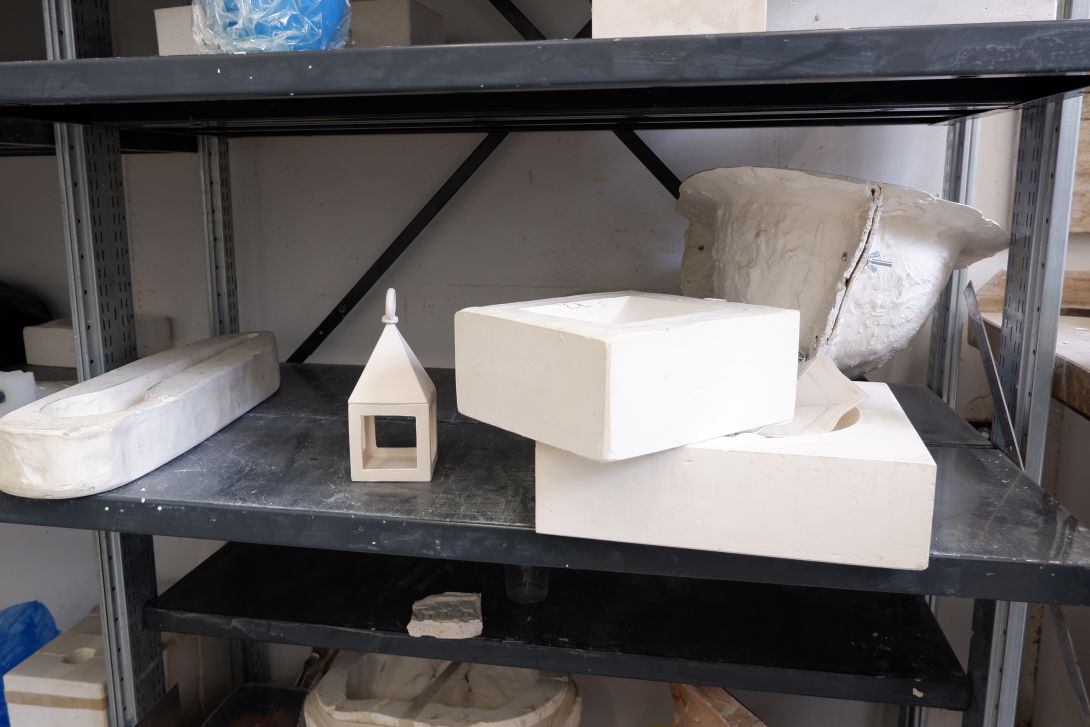
© Natalia Gurova
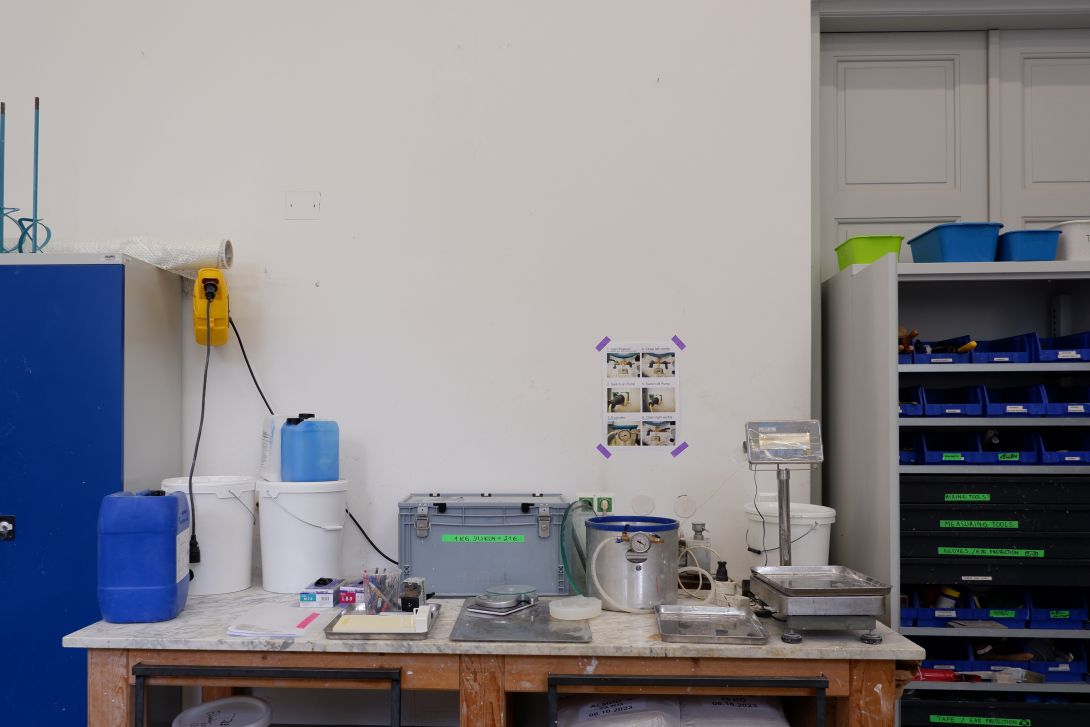
© Natalia Gurova
What I found technically very exciting, but also very exciting in terms of content, was Amy-Casilda Bartoli's diploma project. She graduated in the summer semester this year, and she produced a really large part of her thesis here in the workshop. We started with moulding her face with alginate. We then developed a silicone mold from this cast and made a positive from silicone. We then cast this in plaster, i.e., in a multi-part plaster mold, to produce her face as a ceramic cast. Amy then developed mask parts using Instagram face filters. These were digital mask parts. She 3D printed them here and then cast them in sand molds in pewter. That was a very nice combination of materials. She then applied these mask parts to these ceramic casts of her face, which were - or are - interactively usable for the viewer.
We try to work in a healthy way, and occupational safety plays a significant role. We don't have the opportunity to work with epoxy resins or polyester resins, etc., and are trying more and more to work with materials that are relatively harmless in terms of occupational safety and environmental compatibility.
There are many rules in the workshop, which are summarised in written form in workshop regulations. This is due to the fact that we have so many different groups of materials here. This means that clear distinctions are to be observed. There is much to know about workshop maintenance, including the firing of ceramics. Of course, this is taught in the classes, but all students who want to work in the workshop outside of the courses must at least come and complete an introduction to these workshop rules here. This is an informal meeting that lasts about an hour. As soon as a small group of interested people comes together, I hold it."
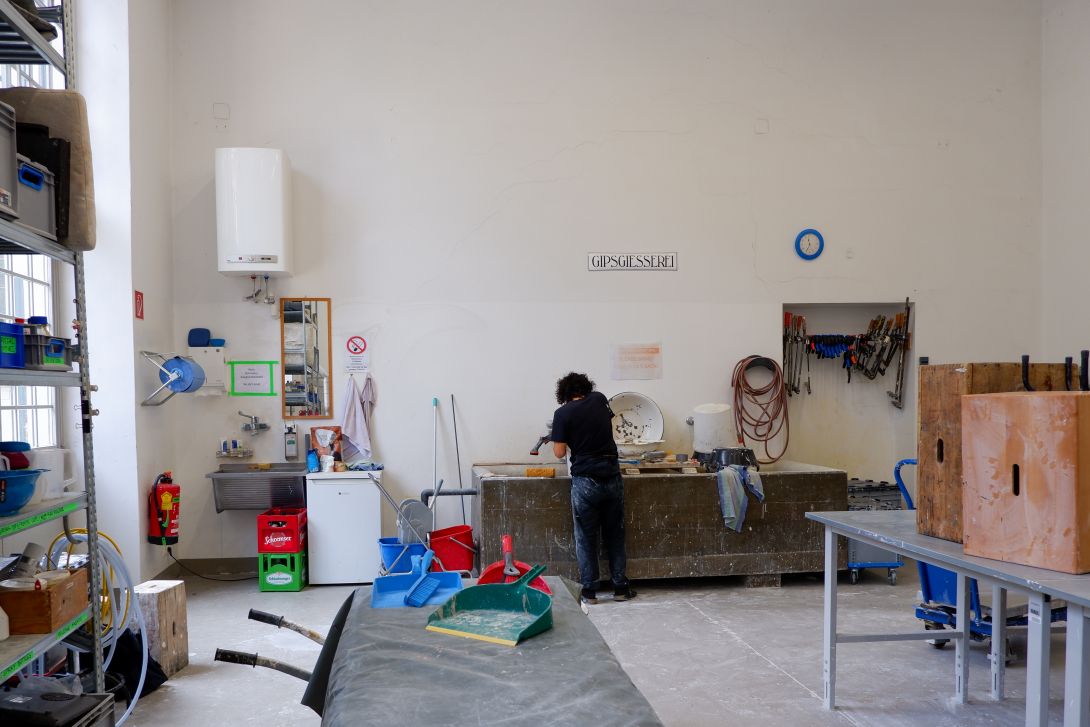
© Natalia Gurova
Further articles
Podcast with Workshop Manager Matthias Hammer
Author: Natalia Gurova (UGC)
The Studio of Art and Space | Object. One Student explains
Author: Editorial team
